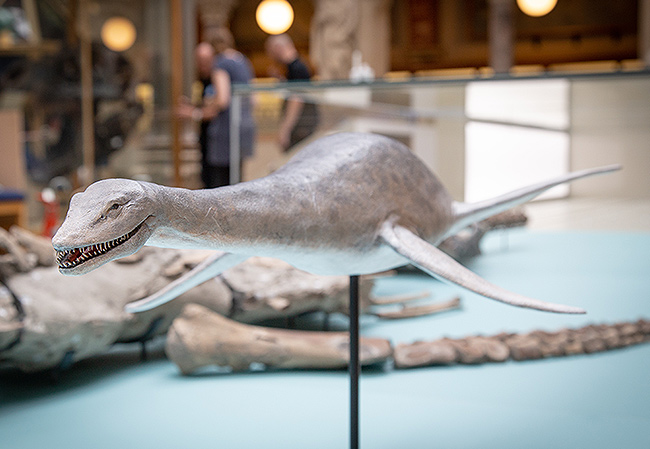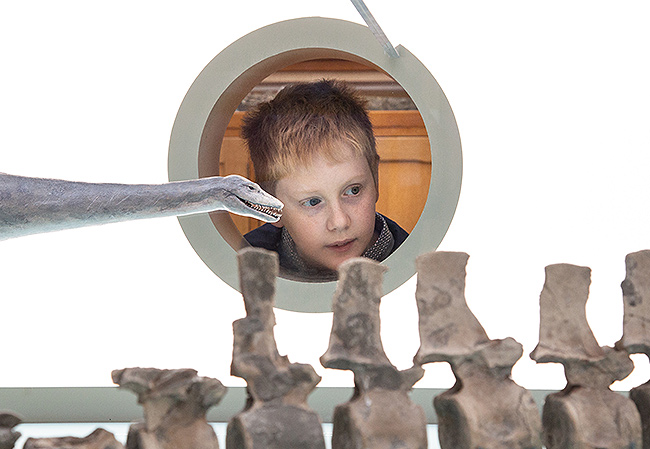A new exhibit paints a fascinating picture of prehistoric marine life in England.
Travel back in time 165 million years, and you would find the land upon which Oxford stands today submerged 50 metres underwater. 'Much of central and southern England was covered with a warm, shallow sea that would have been teeming with animals,' says Dr Hilary Ketchum, Collections Manager at the Oxford University Museum of Natural History.

The fascinating story of this ancient underwater world is now being told through a new permanent exhibit in the museum's central court. Entitled Out of the Deep, it showcases the remains of two large Jurassic marine reptiles called plesiosaurs. One of these is the rare long-necked plesiosaur that was discovered in a quarry in Cambridgeshire in 2014. The exhibit also incorporates a short-necked relative that was unearthed near Oxford in the 1990s.
'We received an overwhelming amount of public interest when the long-necked plesiosaur was donated to the museum,' says Dr Ketchum. 'We had a lot of people asking us to put it on display, but we didn't have a showcase that was big enough, or the money to get one.' Thankfully, generous donor support meant that the museum was able to purchase the specialist cases it needed, as well as commission a range of new digital content and dynamic artwork for the exhibit.

In addition to finding out more about prehistoric marine life, visitors to the new display will have the opportunity to learn about the techniques used to analyse fossil specimens, and how the findings can help us to better understand the evolution of life on Earth.
'The really exciting thing is that we think they might be new species,' says Dr Ketchum. 'The long-necked plesiosaur has one of the most complete skulls ever found, so that's going to tell us a lot.' It's still early days though, she stresses: 'We haven't had that much time to do research on it. We need to scan parts of the skeleton still preserved in rock, and who knows what that analysis will reveal? I can't wait to find out.'
Out of the Deep has been supported by DCMS/Wolfson Museums and Galleries Improvement Fund; FCC Community Action Fund, administered by WREN; and individual donors. The long-necked plesiosaur was donated to the museum by Forterra in 2015.